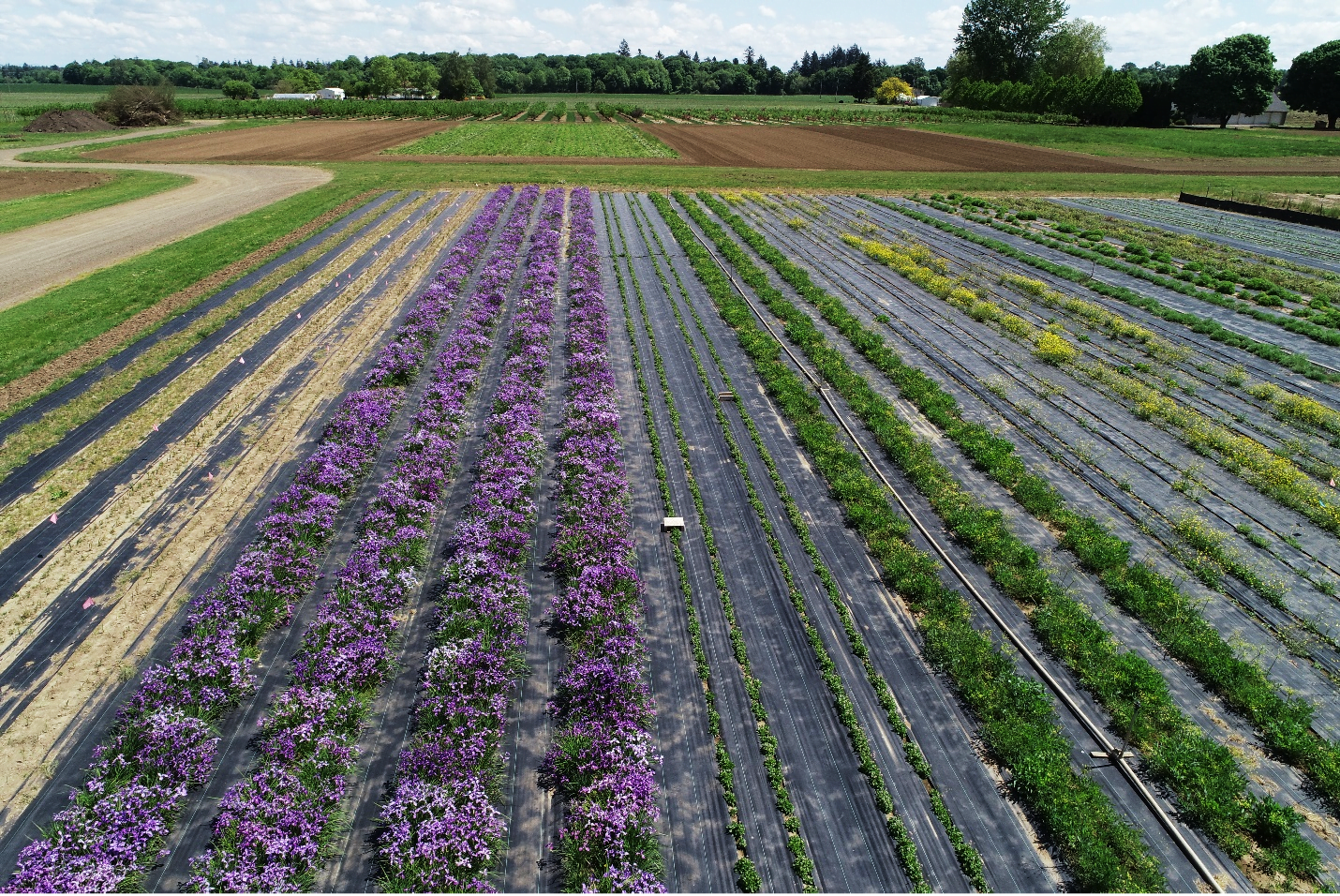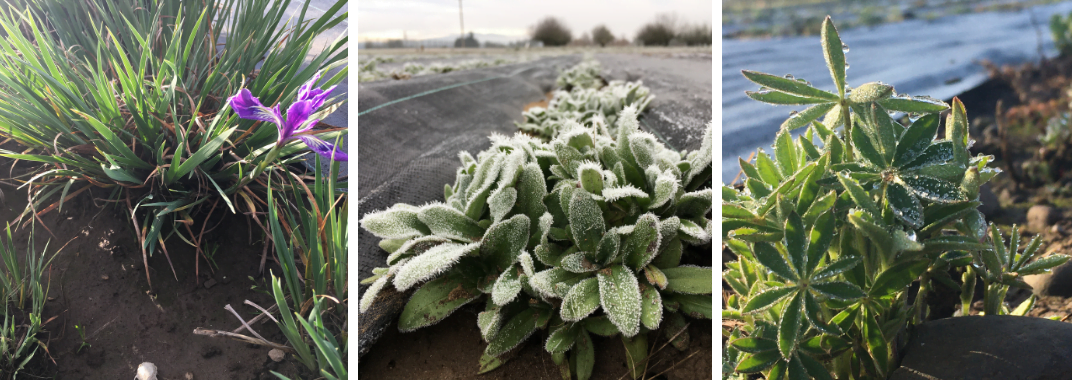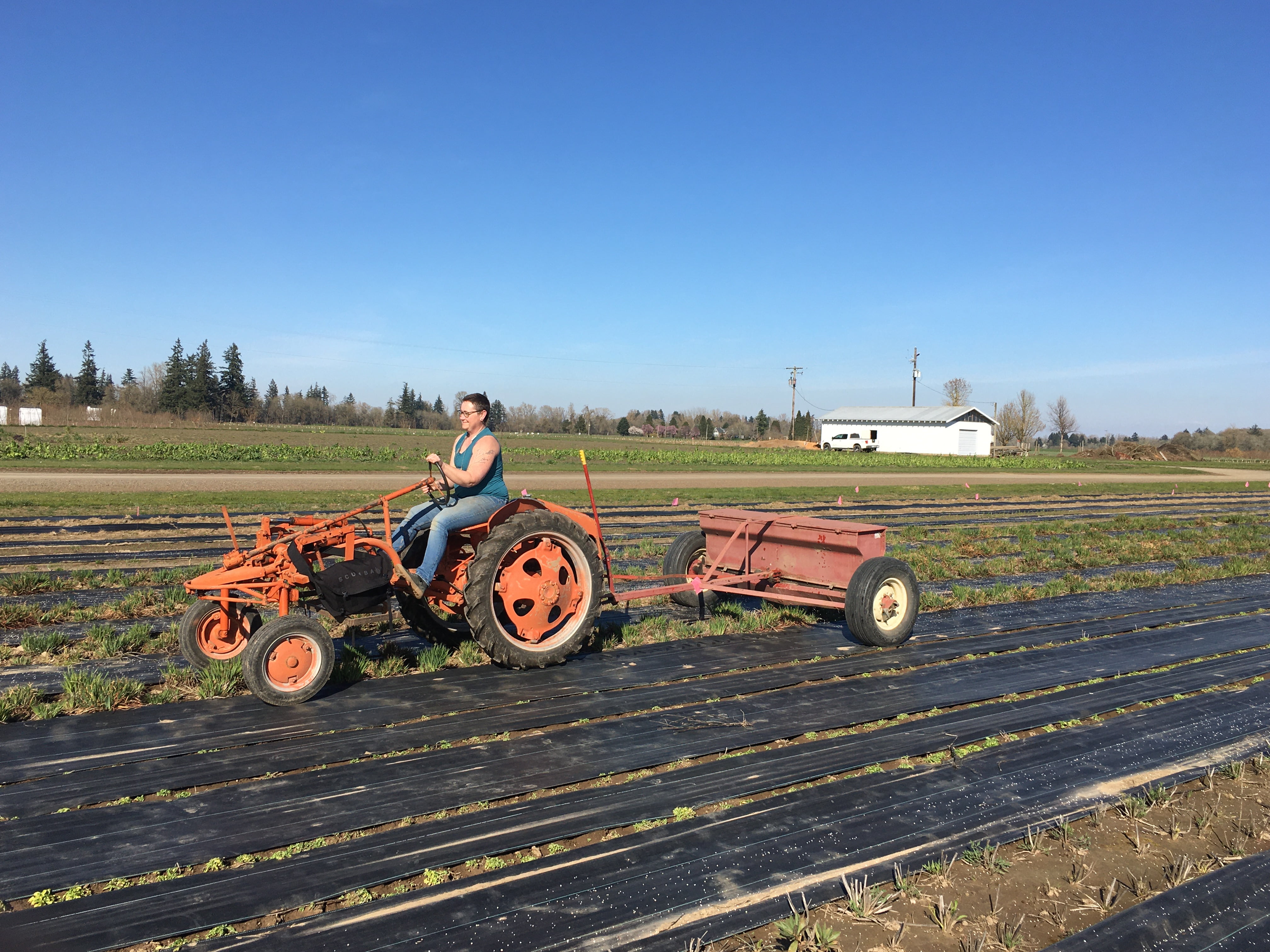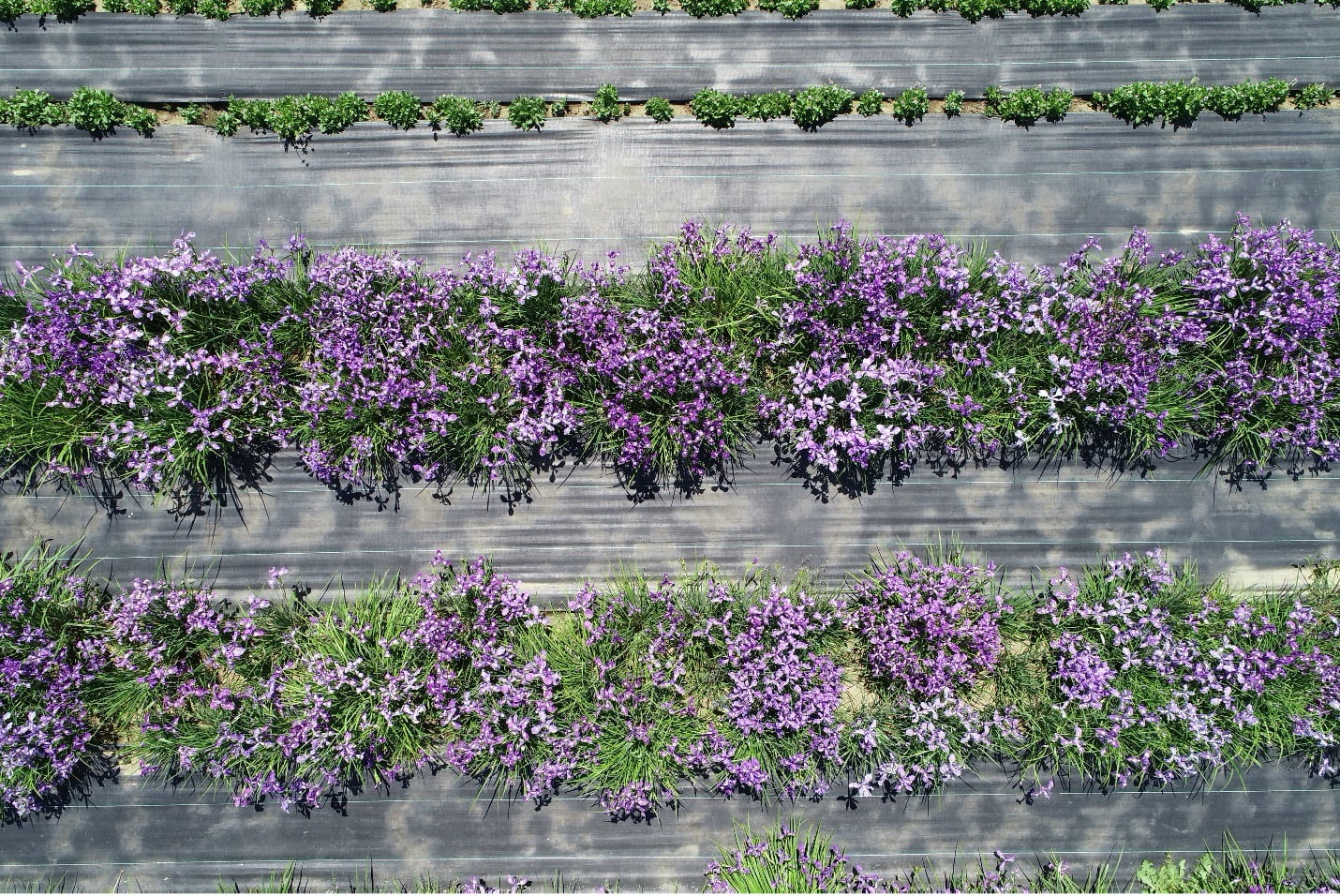
Spring on the Farm and the Planting’s Easy
May 2021
Spring is a period of growth and creation exemplified by the explosion of our native flora. From the small-sized big leaf maple leaves to the flowering of woodland and prairie plants, this is a time of expansion. At times this growth is so rapid that if you look away long enough no more are the maple leaves crumpled and unfurling, but they are larger than a palm and soon to be greater than a head. In many ways, these natural expansions and biologic processes are what we follow on the farm from dormancy, to flowering, and then seed harvest.
This year on the farm, we have been busy completing our annual seed inventory, preparing areas for plantings, planting, installing irrigation, and taking fun pictures. A commendable accomplishment was the completion of our seed inventory. This was a huge effort, and we are thankful for all help we got. With the seed inventory finished, IAE's seed cleaning facility at Diamond West near Corvallis, Oregon, can become a working seed cleaning space that will aid us in the months to come.
While not doing the inventory or cleaning seed, we have been busy growing plugs in the greenhouse and preparing beds for plantings. Below are two pictures of thinleaf pea (Lathyrus holochlorus) the first right out of cold stratification and the second after planting in early April. As an understory and edge species, thinleaf pea enjoys dappled sun, so when planting we attempted to mimic this by planting snowberry shrubs between the plants. However, it will be a year or more before the snowberry has filled in so for the meantime, we installed a two-foot barrier with weed cloth to provide some shelter from the sun and wind as seen in the picture below to the right.
This spring we planted thousands of plugs to establish a common madia (Madia elegans) field, expand previous Western buttercup (Ranunculus occidentalis) fields, establish a new rosy sea blush (Plectritis congesta) field, and added to our Kincaid’s lupine (Lupinus oreganus) field. In addition to planting in the ground we also have prepared and planted in raised beds (picture below to the left), species like self-heal (Prunella vulgaris), sea thrift (Armeria maritima), and cows clover (Trifolium wormskioldii).
As plants come into flower, monitoring for seed begins and eventually collecting the seeds when the time is right. Currently, one of the species that is closest to producing ripe seed is Tolmie star-tulip (Calochortus tolmiei), which is pictured below to the left flowering and also with capsules beginning to ripen to the right. Other species that we are growing that will be fruiting soon are tough-leafed iris (Iris tenax), Western buttercup (Ranunculus occidentalis), pestle lomatium (Lomatium nudicaule), and Oregon coast paintbrush (Castilleja litoralis) (pictured below). Soon the busyness of seed harvesting will begin.
Board member Shinji Kawai surprised us with the kind gesture of flying their drone over the farm to see it from a new angle. And my goodness, did we see our plants in ways that we had never seen them.
We are grateful for the support of many agencies for funding to produce native plant seed for restoration, including the US Fish and Wildlife Service, as well as the members of the Willamette Valley Native Plant Partnership and Coastal Native Seed Partnership.
Restoration
Research
Education
Get Involved
Contact
Main Office:
4950 SW Hout Street
Corvallis, OR 97333-9598
541-753-3099
[email protected]
Southwest Office:
1202 Parkway Dr. Suite B
Santa Fe, NM 87507
(505) 490-4910
[email protected]
© 2024 Institute for Applied Ecology | Privacy Policy






